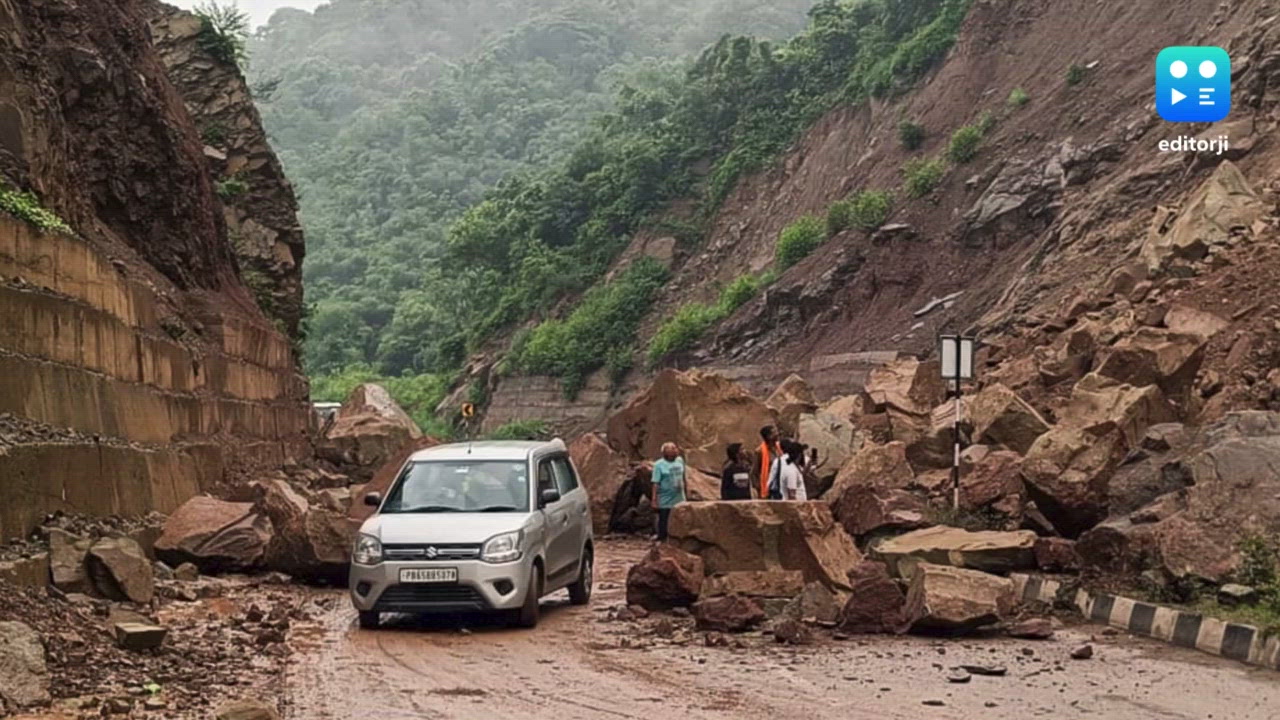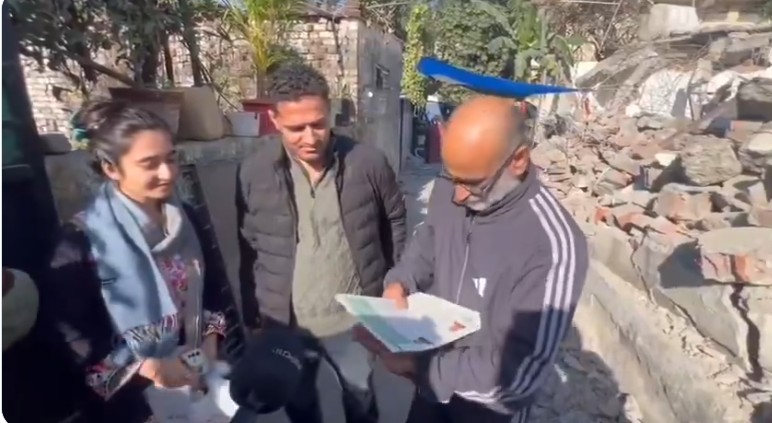A Region at the Mercy of the Mountains
By: Javid Amin | 12 Aug 2025
The Pir Panjal range, a majestic mountain chain in Jammu & Kashmir, is often celebrated for its breathtaking landscapes, lush meadows, and the life-giving rivers that carve their way through valleys. But this week, the same geography that attracts tourists and sustains local communities has turned hostile. Relentless rainfall and early snow have unleashed a chain of disasters — landslides, flash floods, and transport paralysis — leaving thousands stranded and vulnerable.
For three consecutive days, nature has tested the resilience of these mountain communities. The downpour has been so intense that in some areas, the soil itself seemed to give way, swallowing roads, cutting off villages, and trapping travelers in dangerous conditions.
Weather Chaos & Tragic Losses
Unrelenting Rains and Early Snowfall
The Indian Meteorological Department (IMD) recorded above-average precipitation across Pir Panjal, with some areas receiving more than 150 mm of rain in just 48 hours — far higher than seasonal norms. Unseasonal snowfall in higher reaches compounded the misery, making conditions more treacherous.
Meteorologists attribute this to an active Western Disturbance — a weather system originating over the Mediterranean that travels eastward, gathering moisture before colliding with the Himalayas. Climate scientists warn that such intense and prolonged precipitation events are becoming more frequent in the western Himalayas, partly due to climate change-induced shifts in monsoon and winter patterns.
Lives Lost to Landslides
In Badora, Reasi, tragedy struck when a massive landslip near Shiv Gufa crushed a makeshift tent, killing two young men instantly. Local accounts reveal that they were seasonal workers sheltering from the rain, completely unaware of the danger above them.
Two more lives were lost in the Pir Panjal valley when hillside debris buried a rural pathway. The victims were residents trying to make their way to safety, but the unstable slopes gave them no chance.
Child’s Miraculous Rescue from Flash Floods
In Rajouri, heavy rain swelled local streams into raging torrents. A child became stranded in the middle of a rapidly rising water channel, clinging to a boulder as the current roared around him. A dramatic rescue operation — involving the Indian Army, State Disaster Response Force (SDRF), and police — finally brought him to safety, a rare moment of relief amid widespread grief.
Infrastructure & Travel Disruptions – Roads to Nowhere
Highways Cut Off
Two vital lifelines — the Srinagar–Jammu National Highway and the Sinthan–Kishtwar road — were blocked by multiple landslides. These routes are not just travel corridors; they are the economic arteries of the region, carrying food, fuel, and essential goods.
Pilgrims returning from the Amarnath Yatra found themselves stranded at Banihal, Qazigund, and Mir Bazar, where makeshift shelters were set up. The spiritual journey’s end was replaced by uncertainty and hardship.
In Ramban district, the scale of rockfall was so great that authorities resorted to controlled blasting with explosives to dislodge massive boulders. By late evening, partial restoration allowed limited traffic under strict monitoring, but full clearance remains days away.
Schools Closed & Red Alerts Issued
In districts like Poonch, Reasi, Doda, and Udhampur, classrooms fell silent as schools closed preemptively. For children in these areas, the closures are more than a minor disruption — in many rural parts of Jammu & Kashmir, schools also serve as midday meal providers and safe community hubs.
The IMD issued a heavy rainfall and flash flood warning for the next 24 hours, urging residents to avoid unnecessary travel and stay alert to changing river levels. Local administrations have placed emergency teams on standby in low-lying and landslide-prone areas.
Daily Life at a Standstill
In Rajouri and the higher reaches of Pir Panjal, snow mixed with rain has turned narrow mountain roads into slippery hazards. Shops remain shuttered, transport has halted, and residents are relying on stored supplies.
Deputy Commissioner Vikas Kundal toured the flood-hit pockets of Poonch, assessing structural damage to homes and public infrastructure. Relief distribution — including dry rations, blankets, and medicines — is ongoing, though access remains a major challenge.
The Environmental Context – Why Pir Panjal is Vulnerable
The Pir Panjal range is geologically young, made of loosely compacted sedimentary rock, making its slopes highly susceptible to erosion. When intense rainfall saturates the soil, it loses cohesion, triggering landslides.
Additionally, deforestation for road expansion, agriculture, and settlements has reduced slope stability. Climate experts point out that warming trends in the Himalayas are altering precipitation patterns — increasing the intensity and unpredictability of rainfall events.
In the last decade alone, extreme weather incidents in Jammu & Kashmir have more than doubled, according to the State Climate Change Cell.
Relief Efforts and Challenges
Rescue operations are complicated by geography — narrow, winding roads make it difficult for heavy machinery to reach landslide sites. Helicopter sorties are limited due to low visibility and turbulent winds.
Coordination among agencies — Army, SDRF, NDRF, local police, and civil administration — has been critical in preventing further casualties. Yet, with communications patchy and fuel supplies low in some areas, sustaining relief work is becoming increasingly difficult.
Lessons in Preparedness
Experts recommend:
-
Early warning systems with community-level dissemination.
-
Landslide zoning maps to regulate construction in high-risk zones.
-
Improved drainage and slope management along highways.
-
Community training in emergency response and first aid.
With tourism, agriculture, and trade heavily dependent on road connectivity, building resilient infrastructure is key to the region’s survival.
Looking Ahead – The Road to Recovery
The rains may ease in coming days, but rebuilding will take weeks, if not months. The government’s immediate priority is restoring road links and ensuring uninterrupted supply of essentials.
But long-term recovery must include environmental safeguards — afforestation, slope stabilization, and climate-adaptive planning — to reduce the impact of future weather events.
Bottom-Line
The Pir Panjal rains of 2025 are not just another seasonal hazard; they are a stark reminder that climate change, fragile geography, and unplanned development can combine into a perfect storm of disaster. While rescue efforts save lives in the short term, only a deep commitment to sustainable planning can safeguard this mountain paradise for the generations to come.




